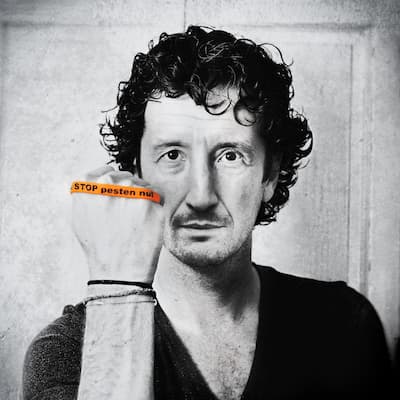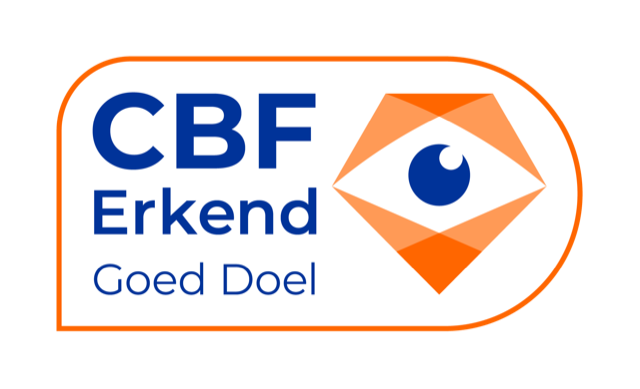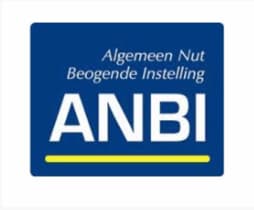Abstract
Ascertaining if non-drama specialist teachers would be able to use role-play to help reduce bullying in their classrooms was the key aim of a longitudinal two-year pilot study conducted in an inner-city school in Ireland. The study combined qualitative and quantitative elements, including ongoing teacher feedback (oral and written), student focus groups and teacher interviews and the Olweus Bully Victim Questionnaire. Role-play has been offered as a resource in other anti-bullying interventions, but its efficacy is not often evaluated as usage is optional and left to the discretion of teachers who can eschew role-play activities due to time constraints, curriculum overload and unfamiliarity with drama activities. At the end of the two-year intervention, students indicated that there was a 53% drop in victimisation. Most teachers reported that role-play was a very effective resource for opening the discussion and creating awareness about bullying while aiding its prevention. Students, who participated in focus groups, reported that they found their teachers more effective in dealing with bullying incidents. Thus, this study provides evidence that role-play can be a powerful resource for teachers to utilise in creating awareness about bullying and give teachers and students the skills the aid its prevention.
The Bullying Prevention Pack (BPP) piloted in this study is a teacher resource created by the author that employs role-play as the central learning tool to facilitate discussions on what bullying is, how it affects fellow classmates and what can be done to prevent it in the school environment. The BPP comprises five lessons that can be facilitated over five weeks. Each week the teacher aims to build on knowledge about bullying, its effects and how to prevent it through role-plays and discussions. The role-plays include bystander role-plays where students learn about participants thoughts, feelings and motivations regarding bullying incidents and defending role-plays that encourage students to do something to prevent bullying (e.g. directly preventing bullying amongst peers, enlisting the aid of a teacher, using a method to report bullying, such as a log book or report box). The final lesson is a brain storming session where the class discusses what they have learned about bullying and devise strategies to prevent it in the future. The learning and strategies are summarised on a poster-sized contract on which all students put their name. The contract is then posted in a central area in the classroom as a constant reminder of what the class has agreed to. Thereafter, the teacher reviews the contract once a month with learners, reviewing how strategies are working and making changes or additions if needed. The contract, along with the monthly review strategy, were incorporated in the BPP as often the positive effects of a bullying prevention intervention can fade over time (Ertesvåg et al. 2010).
The BPP was initially trialled by the researcher in 2004 at a mixed primary school of 126 students (ages 4–12) in rural Ireland. The researcher was a Drama teacher at the school at the time and, coincidentally, was pursuing a MEd at University College Cork at the time. In spring 2004, he was approached by a third-class teacher to help with the bullying in her class of 37 students as ‘the bullying was getting out of hand’. He used role-play with the learners to explore the issue of bullying and how it made them feel. The day following, he received a call from the principal asking if he would extend the role-play lessons to the whole school as she had received several positive calls from parents about it. The researcher agreed and discussed the request with his MEd lecturer as it was an opportunity to fulfil a research requirement of the Masters. The results of which were published in An Leanbh Og (Donohoe 2007), an Irish research journal.
In a question and answer session at a research conference for early years education at University College Cork, it was put to the researcher that, since he was a Drama teacher, it was relatively easy for him to facilitate role-play activities as he had considerable experience, whereas, it might be difficult for teachers to organise role-plays who had little or no experience in the subject. This was a valid point that led the researcher to formulate the research question for the current study: Would non-drama specialist teachers be able to use role-play to help reduce bullying in their classrooms? This was a significant question as studies on teacher usage of role-play to prevent bullying are rare.
Dilemma for Role-Play Usage
Teachers often omit role-play activities when conducting bullying prevention interventions in favour of more didactic methods (Bradshaw 2015; Kallestad and Olweus 2003). A key reason for this is that resource intensive bullying interventions, that have a plethora of resource elements to consider, can be difficult to enact in their entirety (Goodwin et al. 2019). A significant element, which needs further research, is the use of interventions that do not put a high demand on teacher time with multiple resources that require many meetings, dissemination and personal time to come to grips with the prescribed materials (Horner 2009; Stiller et al. 2013). Not exacerbating overload was a key consideration in the development of the BPP, especially given the Irish context.
The Republic of Ireland has some of the largest class sizes in Europe (Organization for Economic Cooperation and Development (OECD 2018). Teachers and principals have the wide held view that there is curriculum over-crowding, lack of time to implement the full curriculum, ineffective school policies, lack of administrative support, inadequate school-based resources and the support of educators (Marshall 2012; McCabe 2017; National Council for Curriculum and Assessment 2010). Lack of time can mitigate against the success of new initiatives such as an anti-bullying intervention. Additionally, it has been reported that there is not enough support given to professional development programmes that encourage the use of initiatives such as anti-bullying strategies (OECD 2015). This lack of support means that teachers often fall back on didactic teaching methods as the key element of their pedagogical craft as there is pressure to have students perform well in exams, which require rote learning (McCabe 2017). This desire for product versus process (Heathcote 1980) can blunt the pedagogical creativity of teachers (McCabe 2017). Rigid learning environments are not fertile ground for teachers to explore using drama activities as a learning aid. Even though in the primary school setting there is less of an emphasis on exams, use of drama activities is lacking (O’Sullivan 2011). One problem may be that teacher knowledge and/or experience of how to use role-play has had mixed success. Since working in a system where there is little emphasis on group learning (Gilleece et al. 2009), desire for product over process (Anderson 2002) and the lack of substantial financial support for bullying prevention initiatives from the government (Donohoe 2016), can make the effort needed to learn how to use drama constructively for learning risky.
It is against these harsh realities that the researcher created The Bullying Prevention Pack (BPP) to aid the fulfilling of two curriculum requirements for Irish teachers. Firstly, it can be used as part of the Social, Personal and Health Education (SPHE) remit. SPHE is part of the Irish curriculum. Its overarching aim is to support the personal development, health and well-being of young people with tackling bullying as one of its objectives. Secondly, role-play that allows children to explore conflicts, attitudes, emotions and concerns is a key requirement of the Drama curriculum (Department of Education and Skills 1999). Engineering the BPP to be a user-friendly, curriculum complimentary intervention was necessary to answer the research question: would non-drama specialist teachers be able to use role-play to help reduce bullying in their classrooms?
Defining Bullying Behaviour
There are variations in the definition on what bullying is from country to country and these tend to focus on the behaviours that constitute bullying behaviour (Action Plan on Bullying 2013). However, there tends to be agreement on the following parameters, which have been put forth by Olweus (2013), a pioneer in bullying prevention methodology: (1) it is intentional negative behaviour that (2) typically occurs with some repetitiveness and is (3) directed against a person (or persons) who has difficulty defending himself or herself. Bullying is further divided into the subtypes of direct and indirect. Direct bullying can include aggressive acts, such as name calling, hitting, extortion, damage to property, making nasty comments or gestures to the individual, whereas indirect bullying refers to the harming of others through the manipulation of peer relationships by acts, such as spreading negative rumours to damage a person’s reputation, excluding someone from a social group or using cyber technology to harass a person.
Sercombe and Donnelly (2012) have suggested a reworking of the Olweus definition with regard to the person having difficulty defending themselves. Sercombe and Donnelly argue that this is too broad a statement and needs clarification. They recommend describing bullying as a relationship rather than behaviour: “Bullying is a relationship of violence involving practices of domination that strip another person of the capacity for agency, using interventions carrying the sustained threat of harm” (Sercombe and Donnelly 2012, p. 10). A key supposition of this refinement of the definition is that there is a relationship where the target person is sub-ordinated to the bully within the social milieu that includes the peer group, classroom, the school, family and the larger community. This loss of agency can engender long term helplessness with an inability to act. Crucially, actual bullying may not be repeated, but the threat of it can be sustained over time. For example, a once-off isolated act of aggression can cause a child to live in daily fear (O’Moore 2010). Hence, there can be striking differences between what teachers and students report as bullying. For example, Cheng et al. (2011) conducted a study with 1558 respondents which demonstrated a signficant difference between teacher and student views of bullying. Sometimes students might view a single aggressive act as a demonstration of bullying, whereas the teachers emphasized the repetitive nature of the act. Hence, the complexities in determining whether an incident is considered bullying or not needs to be acknowledged (Mishna et al. 2005). Such complexity was reflected in this study and will be discussed.
Role-Play Usage in the Classroom
Unfortunately, while role-play is often cited as a component to aid bullying preventions, there is little direct evidence of teachers using it effectively to reduce bullying (Donohoe and O’Sullivan 2015). Well-known anti-bullying interventions, such as The Olweus Bullying Prevention Programme, The Sheffield Anti-Bullying Programme, Friendly Schools, Expect Respect, KiVa and Dare to Care recommend the use of role-play as a component in their prevention programmes (via scripts, plays, videos or structured improvisations). However, the respective published research of these interventions lack direct evidence of teachers using proscribed resources to reduce bullying in their evaluations (Bradshaw 2015; Olweus and Kallestad 2010, Pearce et al. 2011; Polanin et al. 2012; Rosenbluth et al. 2004; Salmivalli et al. 2004; Smith et al. 2004). This may be because role-play activities are often given as an optional element for inclusion in anti-bullying interventions, but usage is left to the discretion of teachers (Kärna et al. 2009; Pearce et al. 2011) who may have a gap between understanding Drama in Education’s (DIE) value and actually applying it to generate knowledge and understanding (Donohoe and O’Sullivan 2015). This research gap may be exacerbating ambiguous attitudes to the inclusion of role-play activities in interventions. It also may be that Drama as a subject is relatively new in the Irish curriculum and teachers’ experience with it as a resource to promote skills for dealing with difficult social situations is only recent (Donohoe 2016). However, using Drama as a resource to deconstruct how the individual and others operate in the world has a history that is approximately 100 years old.
In the past century, role-play activities have grown in use and variety in the classroom. In the early twentieth century Harriet Finlay-Johnson (1912) felt that too much attention was given to the adult view of how a performance should be staged. For example, children being given a script to memorise by rote for performance, being told where to stand and how to act. Instead of rote learning Finlay-Johnson valued cooperative learning, reliance on the strength of the imagination, self-paced learning with teachers as facilitators and co-learners (Anderson 2002). She prefigured Vygotsky’s Zone of Proximal Development when she observed that, “Children have a wonderful faculty for teaching other children and learning from them” (Bolton 1998, p.11). A contemporary of Finlay-Johnson, Henry Caldwell-Cook (1917), advocated “the play way”. Caldwell-Cook argued that, as a form of learning, play was not only important for junior and senior infants but to all primary school children as he argued that play was a form of practice and preparation for adult life. Caldwell-Cook encouraged free play, followed by structured playing that included use of classical works. What is most significant in his practice was that Caldwell-Cook was the first to embrace process rather than product: “the claim here put forward is not for the destination but chiefly for the journey” (Caldwell-Cook 1917, p. 6). Marjorie Hourd (1949) took Cook’s observations a step further by arguing that the child should not be encumbered with overloaded rehearsals that focus on character attributes but rather allow the child freedom to play at being themselves. This view was central to the work of Peter Slade and Brian Way who saw no need for an audience or having to meet the stressful objective of rehearsals for public performance (Slade and Way 1954). In 1954, Slade and Way wrote the influential text Child Drama, which was a landmark work for Drama in Education because it contained the view that, rather than thinking of a child as a tabula rasa, who needs training and indoctrination, the child should be thought of as an individual who has their own creative impulses which can be nurtured and who, with the aid of drama activities, can be directed and guided to tap into these impulses. Such a view of the child in the educational milieu has its foundation in the thoughts of Rousseau (1979) who conceived of the child as an active learner. This was further developed by Dewey (1897) who was strongly critical of the didactic method with its emphasis on the mere transmission of facts. Disliking the stilted, unnatural imposed styles of speech and movement frequently bred by formal Speech and Drama training, Slade and Way were more interested in spontaneous and sustained dramatic play, requiring minimal teacher guidance (Slade and Way 1954). The methods of Slade and Way were crystallised by Richard Courtney (1968) in his influential work, ‘Play, Drama and Thought’. Courtney put forth that theatre work in schools be downplayed in favour of children exploring drama in the private context of the classroom itself, with no external audience.
This classroom exploration of drama was taken further by Dorothy Heathcote who advocated less of Way’s emphasis on individual development (Way 1967) and more of an emphasis on the ‘we’, what it means to be a social being (Anderson 2002). Heathcote encouraged a systematised use of drama as a way to humanise the school curriculum so that knowledge creation “is not an abstract, isolated subject-based discipline, but is based in human action, interaction, commitment and responsibility” (Bolton 1998, p. 177) with the teacher in the role of facilitator and/or participant. In this social context, the teacher’s mission is to find techniques that utilise the power of drama to open up, explore and influence attitudes, to create an environment where “a dynamic means of gaining new understanding” (Bolton 1979, p. 112) can take place and that could potentially change the learner’s attitudes with regard to socio-political issues and the personal (Bolton 1979). In this way, Heathcote saw drama as a scientific mode of enquiry where each session was a laboratory with reflection in stages as a key element (Bolton 1998).
The fragmenting and examination of experiences in Heathcote’s work was profoundly influenced by the theatre of Bertolt Brecht (Bolton 1998; O’Neill 1985). Brecht wanted his audiences to adopt a critical mind-set so that they recognised injustice and exploitation (Hayman 1983). Brecht employed the use of techniques that reminded the spectator that the play was a representation of reality and not reality itself (Willet 1978). By highlighting the constructed nature of the theatrical event, Brecht hoped to communicate that the audience’s reality was equally constructed and, as such, was changeable (Hayman 1983). Brecht’s fragmentation of experiences to foster the critical mindset influenced Augusto Boal who wrote The Theatre of the Oppressed, which used drama activities as a way to encourage participants to challenge the oppression faced in everyday life (Boal 1985). This potential for issue-based drama to encourage change lies in its ability to connect individual experience to the role as well as seeing oneself in the role thereby (Bolton 1984). By seeing and perceiving the world from different role perspectives and at the same time being able to relate the role to one’s own outlook, the potential for empathy and the understanding of complex situations is developed (Bagshaw et al. 2005).
Role-play’s Potential as a Bullying Prevention Aid
Exploring differing points of view through role-play with discussion can help participants gain skills in social and emotional learning (SEL) (Bolton 1979). By seeing and perceiving the world from different role perspectives and at the same time being able to relate the role to one’s own outlook, the potential for empathy and the understanding of complex situations is developed (Bagshaw et al. 2005). This potential generation of empathy is significant because the empathetic response has been shown to be stunted or lacking in those who regularly engage in bullying behaviour (Gini et al. 2007). Bolton (1979) argues that emotions must be involved for drama teaching to be effective as emotional responses are complemented by intellectual responses (O’Toole and Dunn 2015). The participants must be “touched emotionally enough to bring about a change of attitude, a change in the value” (Bolton 1979, p. 32). Raising levels of empathy is key to encourage bystanders to conceive of responses to bullying problems (Salmivalli et al. 2005).
A key strategy of the prescribed BPP role-play activities is that bullying scenarios presented for discussion do not have to be based on made up events but can be based on student experiences of bullying as long as no one is named or blamed. The emphasis in the ensuing discussions is the behaviour and attitudes of those involved and what can be done to make things better. An argument could be made that since the BPP does not rely on fictional scenarios but simulates real life that its validity as a role-play method might be questioned. However, such use of role-play is not uncommon. For example, Bolton and Heathcote (1999) recommend numerous ways to use role-play, including students being asked to prepare bullying incident scenes based on what could happen at school. Clapper (2010) proposed that “Simulating real life experiences can be quite useful in the classroom as role-play in this way allows learners to become deeply immersed in the learning”. The BPP role-play activities correspond well with successful role-play strategies employed by O’Toole and Dunn, where role-play was used to create realistic models of human behaviour that were within the children’s real-life experiences (O’Toole and Dunn 2015).
The role-play activities in the BPP lessons require teachers to be creative facilitators in its application. Teachers coaching students to simulate bullying behaviours with the aid of role-play can be quite useful as the bullying scenario is a context learners are familiar with and can readily enact (Donohoe 2016). Realism in bullying intervention strategies has been noted to enhance engagement and to facilitate students in developing deeper insights about bullying (Ortiz-Bush & Schultz 2016) as its relevance is immediate and understood (Clapper 2010). Role-play can help participants access a more meaningful experience of bullying incidents via body, feeling and thought experiences (Bagshaw et al. 2005) and, coupled with discussions for meaning making, it can help to generate empathy, which often can be distinctly lacking in bullying situations (Donohoe 2018). Additionally, role-play can be an effective learning resource as it gives learners an opportunity to deal with the disorientation of modern life (Blatner 1995). It can give them an opportunity to explore their unfolding identities and feelings while exploring problems imaginatively within a social learning context, where there can be, “interaction rather than position, and the shifting among several points of view, rather than a reliance on linear reasoning” (Kottler 1994, p. 273). Thus, teacher facilitated role-play to prevent bullying has the potential to be a powerful learning tool. To aid the assessment of this, several qualitative and quantitative instruments were employed in the study.
Methods
Using a mixed methodological approach incorporating both qualitative and quantitative instruments, the main aim of the pilot study was to ascertain the ability of the teachers to use the Bullying Prevention Pack (BPP) to reduce bullying in their school. As the researcher has a background in Theatre Arts, the thought of using quantitative methods was daunting. In previous research, he had only gathered qualitative data. However, he was encouraged by his PhD co-mentor, Mona O’Moore, whose area of research was bullying, to use a quantitative method as it would strengthen the study. Carmel O’Sullivan, the other mentor, whose area of research was Drama in Education, recommended including dichotomous responses for the end of intervention teacher interviews as another means of garnering data to aid correlation. These recommendations are in line with Creswell and Clark’s (2007) argument that qualitative researchers should not shun or shy away from such quantitative data but regard it as an available source of information with which to support or contest qualitative observations.
Download PDF full report Teachers Using Role-play to Prevent Bullying
Tip van de redactie
Heb je haast? Navigeer dan snel naar:
► Scholen & Professionals Kenniscentrum Pesten in het Onderwijs
- Of navigeer direct naar de informatie per functionaris: Schooldirectie & MT / Anti-pest coördinator / Leerkracht / Mentor / Ouderraad & MR
- Leerlingen & opvoeders: Kinderen & Jongeren (Leerlingen) / Ouders & Opvoeders
► Sportverenigingen Kenniscentrum Pesten in de Sport
- Of navigeer direct naar de informatie per functionaris: Bestuurders / Coaches, Trainers & Begeleiders / (Top)Sporters & Scheidsrechters
- Jonge leden & ouders Kinderen & Jongeren (Leerlingen) / Ouders & Opvoeders
► Werkgevers Kenniscentrum Pesten op het Werk
- Of navigeer direct naar de informatie per functionaris: Directie en bestuurders / HRM / MT en Leidinggevenden / Medewerkers / Ondernemersraden / Vertrouwenspersonen
► Ouderen Kenniscentrum Pesten in Woonzorgcentra

Breng snel een bezoekje aan ...
► Kenniscentrum (Klassiek) Pesten
► Kenniscentrum Online pesten (cyberpesten)
► Kennisbank & Downloadcentrum o.a. Beleid & Factsheets / Handleidingen / Lesmaterialen / Posters / Wetenschappelijke Onderzoeken
► Ik word gepest, wat kan ik doen
Stichting Stop Pesten Nu is het enige Erkende Goede Doel tegen Pesten in Nederland!







